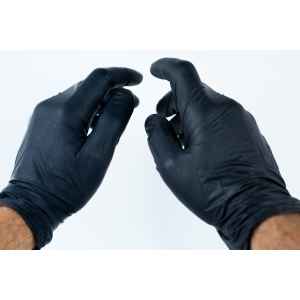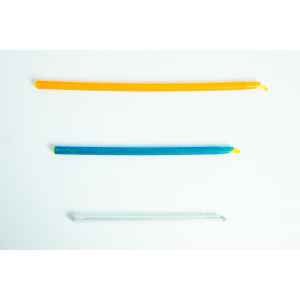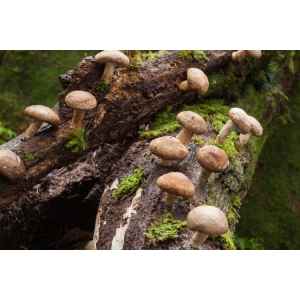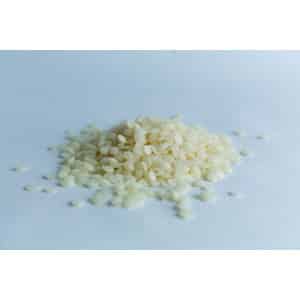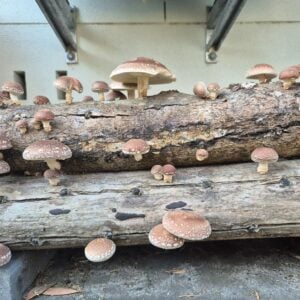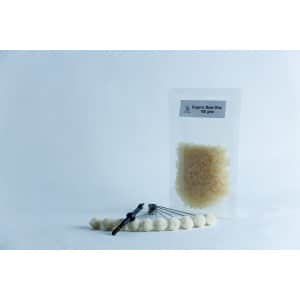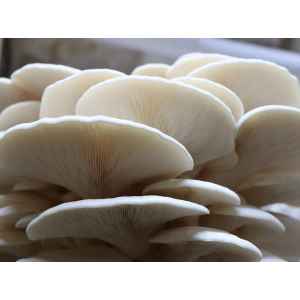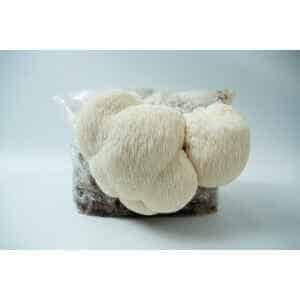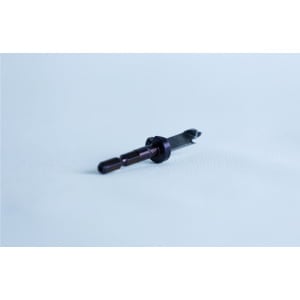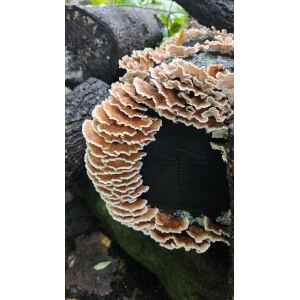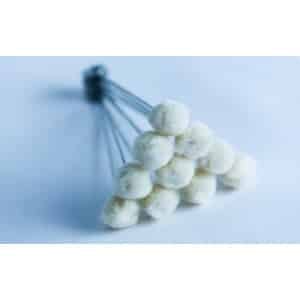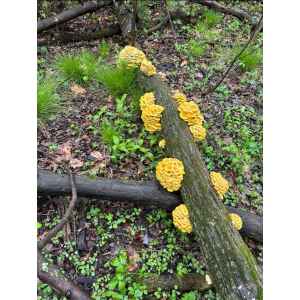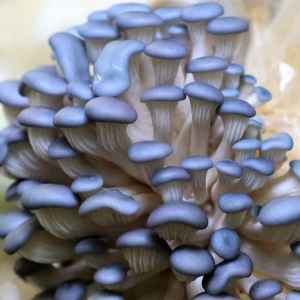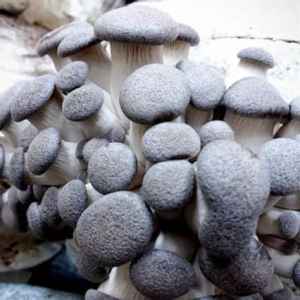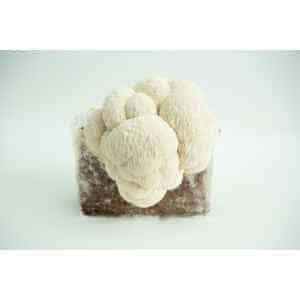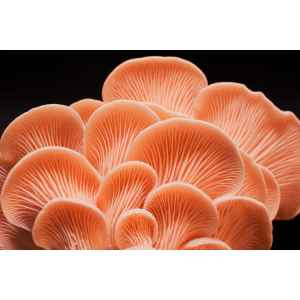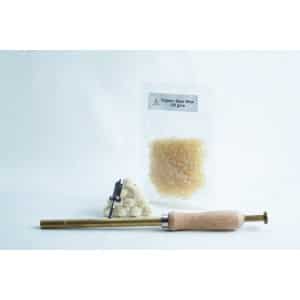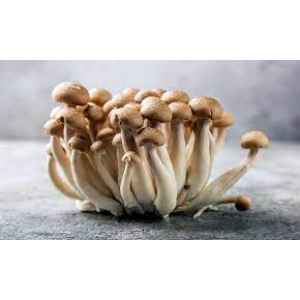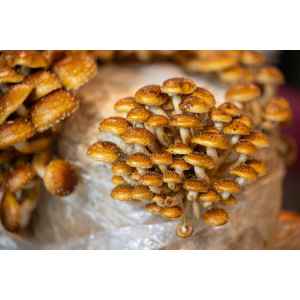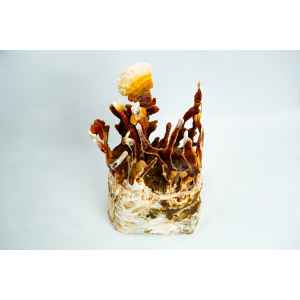Showing 1–20 of 54 resultsSorted by popularity
Mushroom Log Cultivation: A Complete Guide for Beginners
Growing mushrooms on logs is a natural and sustainable way to cultivate gourmet fungi in your backyard. This method closely mimics how mushrooms grow in the wild and offers a long-term, low-maintenance solution to mushroom farming. Among the different species, Shiitake mushrooms are the most commonly grown using this technique. With the right setup and a little patience, you can enjoy multiple harvests from your mushroom logs for several years.
Why Choose Mushroom Log Cultivation?
Mushroom log cultivation is a fantastic method for both beginners and seasoned gardeners. By using logs inoculated with mushroom mycelium, you replicate the natural environment that mushrooms thrive in. This method offers several advantages over other mushroom-growing techniques, such as:
- Low-tech and minimal equipment: Unlike growing mushrooms indoors with specialized equipment, mushroom logs require only a few basic tools and materials.
- Long-term production: A well-prepared mushroom log can continue to produce mushrooms for 3-5 years, depending on the log size and species.
- Sustainable and eco-friendly: You can source logs from local hardwood trees, ensuring a sustainable method of mushroom cultivation.
How Long Do Mushroom Logs Last?
Mushroom logs can last 3 to 5 years, depending on the species of mushroom, the size and type of wood, and the environmental conditions. Once the logs are fully colonized by the mushroom mycelium, they will continue to produce mushrooms seasonally, typically after periods of heavy rain or temperature drops.
The longevity of the mushroom log depends on the size of the log and the type of hardwood used. Larger logs generally produce mushrooms for a longer period, while smaller logs may produce faster but won’t last as long. Certain hardwood species such as oak, maple, and beech provide optimal conditions for shiitake and other gourmet mushrooms, allowing them to produce mushrooms for several years.
By properly maintaining and caring for your mushroom logs, such as keeping them in a shaded, humid environment and regularly watering them, you can extend their productive lifespan and enjoy fresh, home-grown mushrooms year after year.
What is Included in a DIY Mushroom Log Dowel Kit?
To help you get started, our DIY Mushroom Log Kit comes equipped with everything you need to inoculate your logs with mushroom spawn. The kit includes:
- A drill bit: Sized perfectly for creating holes in your logs where the mushroom plugs will be inserted.
- Wax: Used to seal the holes and protect the mycelium from contamination.
- A wax applicator (dauber): This makes applying wax over the plugs simple and efficient.
- Informational blog in the Learn section of the website
Please Purchase Hardwood plugs inoculated with mushroom mycelium separately: These plugs will introduce the mycelium into your logs, kickstarting the process.
What is Included in a DIY Mushroom Log Sawdust Kit?
- Sawdust log inoculation tool– simplifies the process of inoculating logs with sawdust spawn
- A drill bit: Sized perfectly for creating holes in your logs where our mushroom Sawdust spawn using inoculation tool will be inserted.
- Wax: Used to seal the holes and protect the mycelium from contamination.
- A wax applicator (dauber): This makes applying wax over the plugs simple and efficient.
- Informational blog in the Learn section of the website
Please Purchase Sawdust spawn for logs separately: These plugs will introduce the mycelium into your logs, kickstarting the process.
You will need to source a few additional materials, such as 6-8 freshly cut logs (about 1 meter in length and 10-15 cm in diameter), a mallet or a hammer.
Step-by-Step Guide to Mushroom Log Cultivation
Growing mushrooms on logs is straightforward and rewarding. Once you have all your materials, follow these three simple steps:
- Drill Holes: Using the provided drill bit, make holes every 10-15 cm along the length of your log. Ensure the holes are deep enough for the mushroom plugs.
- Insert Mushroom Plugs or sawdust spawn: With a mallet or hammer, tap the inoculated mushroom plugs into the holes. Ensure each plug is fully inserted into the log.
- Seal with Wax: Melt the provided wax and use the dauber to cover each hole. This step protects the mycelium from contamination and keeps the moisture in the log.
Once you’ve completed these steps, place your inoculated logs in a shaded outdoor area and let nature take its course. The mushroom mycelium will begin colonizing the wood, and within 18-24 months, you’ll start seeing mushrooms emerge.
Choosing the Right Logs for Mushroom Cultivation
Not all wood species are suitable for mushroom log cultivation. Most tree-loving mushrooms prefer hardwood species, such as oak, maple, and beech. Some species, like Shiitake mushrooms, are versatile and will grow on a variety of hardwoods.
Here’s what you need to know about sourcing your logs:
- Freshly Cut Logs: You should use logs from healthy, living trees. Avoid cutting logs from dead, dying, or diseased trees, as these may already be inhabited by other fungi.
- Log Size: A general rule of thumb is to use logs that are about 1 meter long and 10-15 cm in diameter. Smaller logs colonize more quickly but will not produce mushrooms for as many years, while larger logs can be cumbersome to work with.
- Ideal Time for Harvesting Logs: Logs are best cut between autumn and early spring, during sap flow, when the wood is full of nutrients that benefit the mushroom mycelium.
The Science of Mushroom Mycelium
At the core of mushroom cultivation is the mycelium, a fungal network that breaks down organic matter and facilitates mushroom growth. Once you inoculate your logs with mushroom spawn, the mycelium will slowly colonize the log over several months. During this time, it digests the wood, converting it into nutrients for mushroom fruiting bodies to emerge.
Once the log is fully colonized, it will begin producing mushrooms seasonally, often triggered by changes in temperature or after heavy rainfall. While it’s difficult to predict exactly when mushrooms will appear, they will continue to do so for several years if properly cared for.
How Long Will Your Mushroom Logs Produce?
Mushroom logs can produce gourmet mushrooms for several years, depending on the species of mushroom and the size of the log. Larger logs tend to produce mushrooms for a longer period, up to 5 years, while smaller logs may only produce for 2-3 years. To get the most out of your logs, be sure to keep them moist and in a shaded area to prevent drying out.
Caring for Your Mushroom Logs
Once your logs are inoculated and placed outdoors, they require minimal maintenance. However, here are a few tips to ensure successful mushroom cultivation:
- Keep Logs Off the Ground: This helps prevent other fungi or pests from contaminating your logs.
- Moisture: Mushroom mycelium thrives in moisture-rich environments. If you live in a dry area or experience long periods without rain, you may need to periodically soak your logs to keep them hydrated.
- Shaded Location: Place your logs in a shaded area, such as under a tree or next to a building, to protect them from direct sunlight.
The Benefits of Growing Mushrooms on Logs
Cultivating mushrooms on logs offers numerous benefits, including:
- Sustainability: Using natural logs and organic methods, you reduce your environmental footprint while producing healthy, gourmet mushrooms.
- Cost-Effective: Once your logs are inoculated, they will continue producing mushrooms for years, reducing the need for expensive growing equipment.
- Connection to Nature: This method of cultivation brings you closer to nature by replicating the way mushrooms grow in the wild. It’s a great option for those looking to engage in more natural gardening practices.
Conclusion
Mushroom log cultivation is a rewarding, sustainable, and cost-effective way to grow gourmet mushrooms at home. Whether you’re a beginner or a seasoned gardener, growing mushrooms on logs is a fulfilling long-term project that will provide you with fresh, delicious mushrooms for years to come. By following the simple steps in this guide, you can successfully cultivate mushrooms in your own backyard with minimal effort and investment.
With the right setup, care, and a little patience, you’ll be harvesting mushrooms from your mushroom logs in no time!

